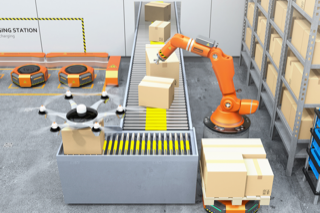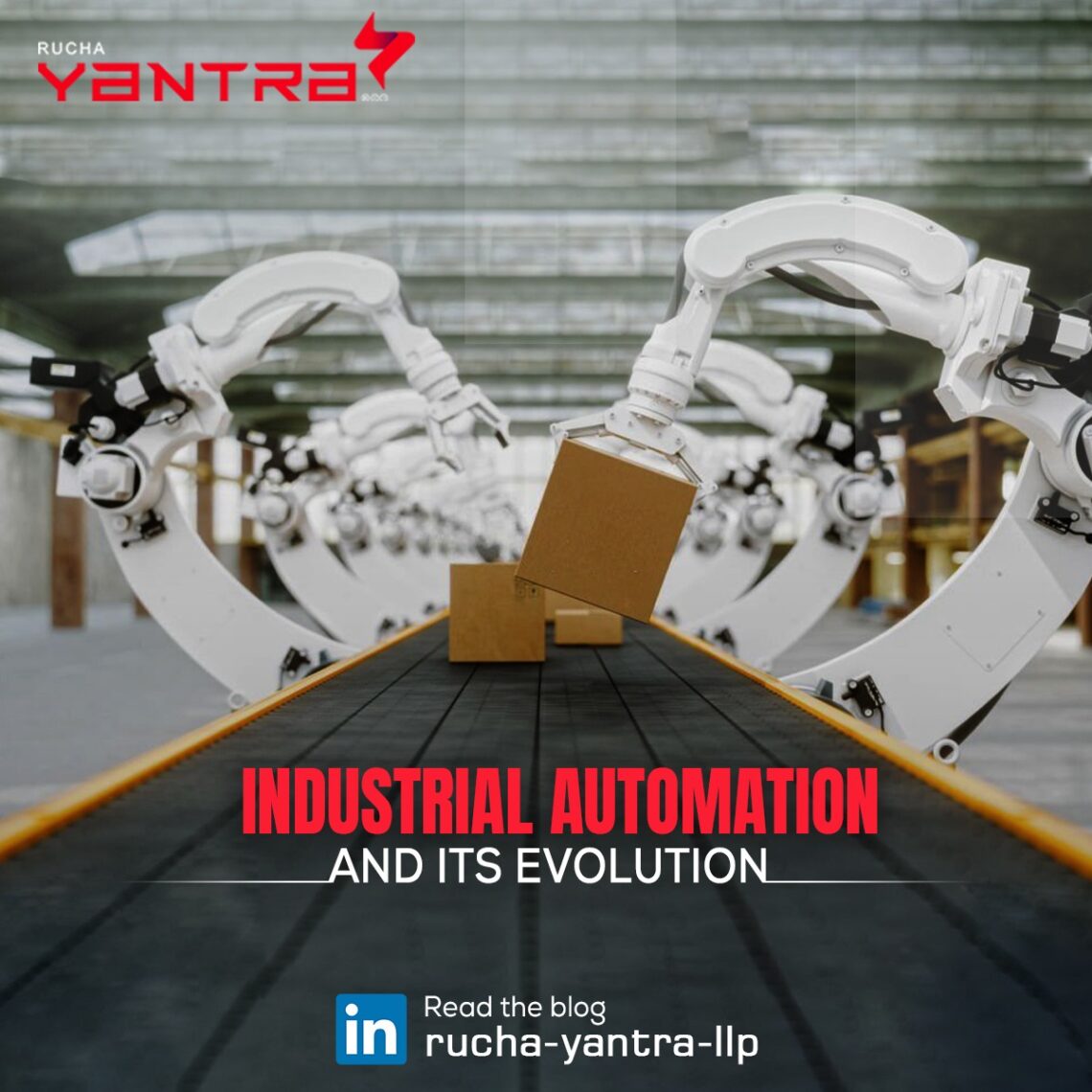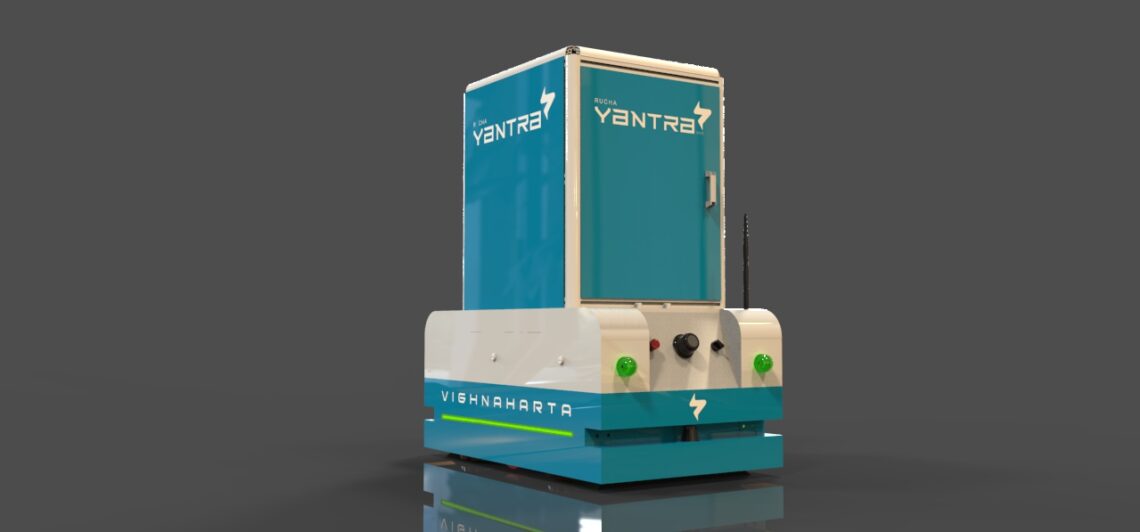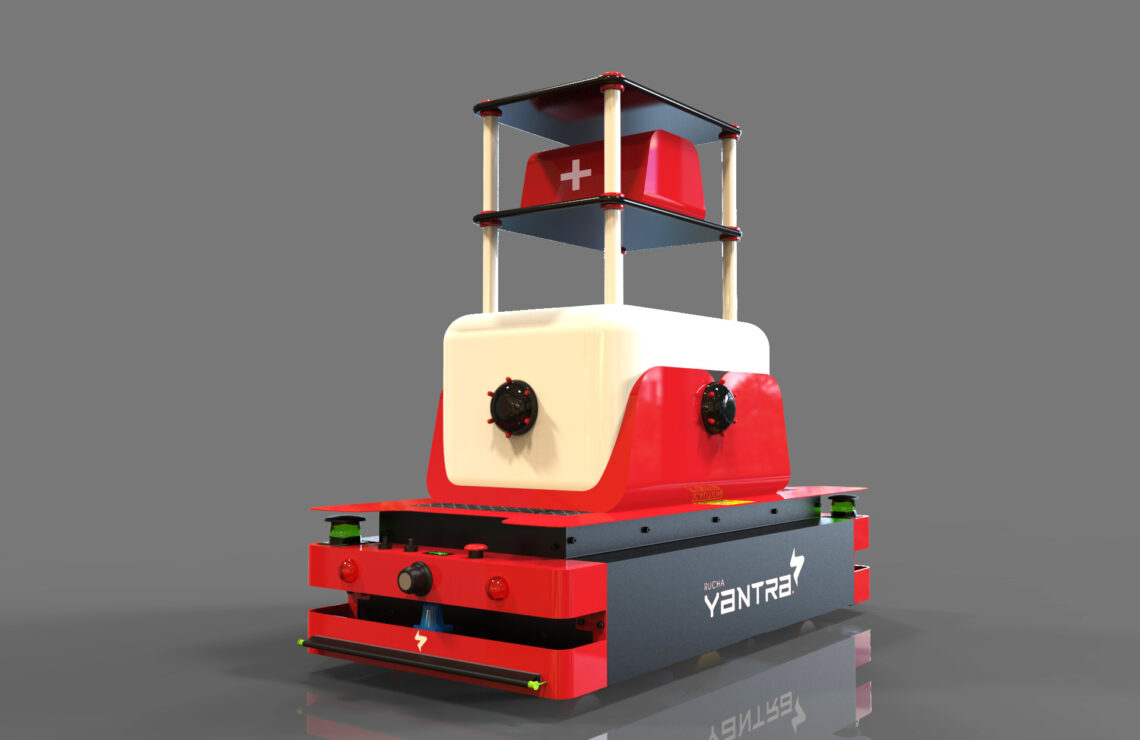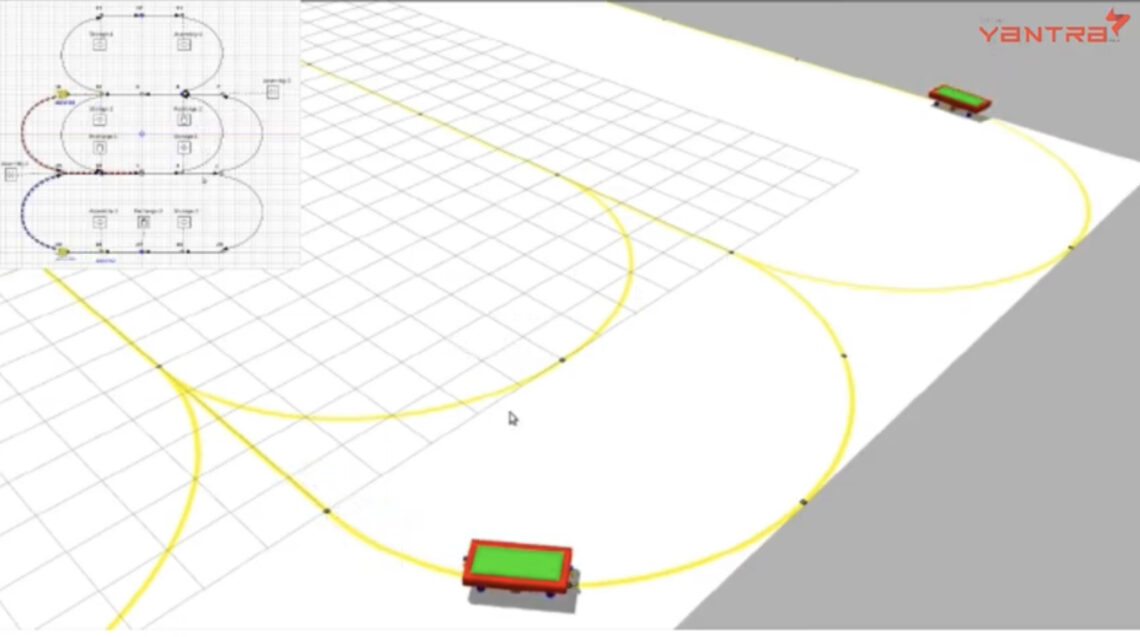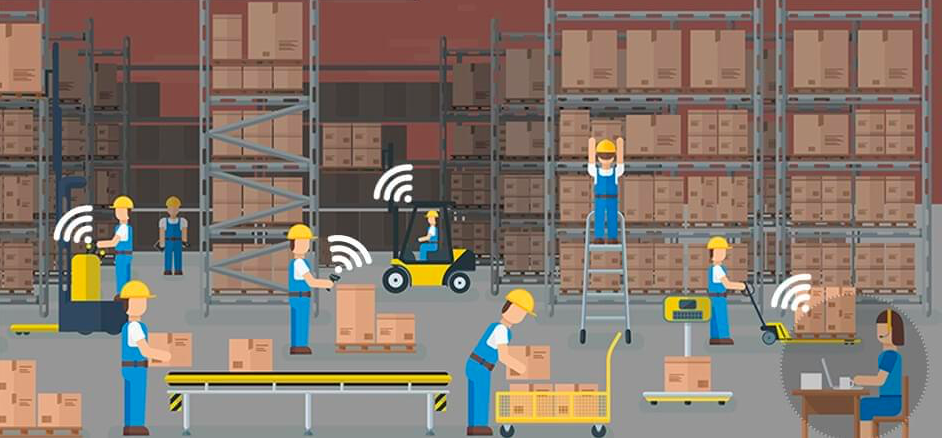You’d be amazed to know how much revenue the global warehouse automation market generated in 2021! As per Statista, the numbers stand at $7.91 billion, with an estimated $51 billion by 2030. The traction was mainly due to the boost in automation efforts to tackle the workforce shortage during the pandemic. Even with the pandemic subsiding, though, we can see that the market for Robotics for warehouse management is increasing rapidly. Welcome back to the 2nd blog in the series. This time, we’ll look at the different types of robots transforming the warehouse. Let’s start! Automated Guided Vehicles (AGVs) Automated Guided Vehicles are self-driving cars that navigate through the warehouse…
-
-
Robotics In Warehouse Management
As a new series of Rucha Yantra’s blogs begins, we will delve into Robotics in Warehouse Management. We hope you find it useful. Using robotics in warehouse management is transforming how companies store and retrieve goods. The main motives behind doing so are improving efficiency and reducing costs. Robotic technology offers a range of benefits, from reducing human labor to increasing accuracy and speed in order fulfillment. This article will focus on the benefits of adopting robotics in the warehouse and its historical evolution. History: The first use The use of robots in warehouses has been in practice since the 1960s. This is when Unimate, one of the first industrial…
-
The Many Advantages of Embracing Industrial Automation
Hey there, hope you liked our last piece that introduced the world of Industrial Automation. Having seen how it evolved and why we need it, let’s now get to know the various advantages it brings to the table. Automation is the way of the future, where there is a healthy collaboration between robots, artificial intelligence, and uniquely human skills. And leading firms around the globe are no stranger to the true potential of industrial automation. The global industrial automation market is forecasted to reach USD 395.09 billion by 2029, and irrespective of the industry, automation is already emerging as a critical component for scalable growth. Contrary to popular belief, industrial…
-
What is Industrial Automation, and Where is it Taking Us?
Welcome back to another series of interesting information and insights into modern technologies. This time around, we shall be taking up the topic of Industrial Automation. We hope you find it interesting. Let’s begin! Automation is rapidly transforming how we think about, operate, and utilize technology across industries for various processes. Today, industrial automation is a reality that goes beyond mechanization – it involves the active use of control devices like PCs, PLCs, and PACs to successfully navigate industrial processes. Though it is broad in scope and purpose, industrial automation can be defined precisely. Simply put, it refers to the integration of computerized machinery, information technologies, and control systems into…
-
The many benefits of warehouse robotics
Welcome back! As we wrap up the series on warehouse robotics, where we understand the term and the different types of warehouse robots in the previous two blogs, today, we shall list down the many benefits of putting robots to use in warehouses. Let’s begin. Industrial productivity has come a long way since the 18th century. Not only have industries revamped themselves in terms of the total output, but the resources expended to produce a single unit of any finished product have also dramatically come down. Novel technological innovations have helped companies achieve both of these objectives simultaneously. Robotics is one such technology. Unerring accuracy, uninterrupted efficiency, and top-notch productivity…
-
How robotics is re-engineering the warehousing dynamics
The manufacturing world is no stranger to technological transformations. Robotics is one such transition that has been in the works for decades and is coming into its own. It is yielding higher revenue and drastically reducing costs for firms globally. Warehouse robotics essentially involves using state-of-the-art automated systems, robotic machines, and software for executing routine, run-of-the-mill tasks in the warehouse. Once looked at with much skepticism, these robotic elements have risen to a position where companies insist on them being an inextricable part of the supply chain. The larger question that many Indian companies remain unconvinced about is the possible benefit that will accrue to their bottom line by using…
-
Impact and Rise of Service Robots in Healthcare
Before we conclude the blog series on Robotics in Healthcare, we shall look at an essential type of robot taking the healthcare world by storm. Service robots relieve the burden on healthcare workers and paramedical staff by taking up routine logistical tasks. These robots can set up patient rooms, track supplies and file purchase orders, restock medical supply cabinets, and transport bed linens to and from laundry facilities. Delegating such tasks to robots helps the staff have more time for jobs that require human interaction and judgment. The rise of service robots The covid-19 pandemic has changed the way we live and work with each other. Sanitation requirements and social…
-
Robotics in Healthcare: Applications (Part 1)
The series starting with this blog was chosen by you – our readers and followers. Thus, we are extra excited about sharing interesting information through the upcoming blogs. We shall be talking about the confluence of 2 industries that are heavily trending at the moment. Robotics and healthcare! Hope you find the series engaging. The stress on greater precision in surgeries, better management of patients and hospitals, and reducing human errors in treatment keeps pushing the healthcare industry to adopt newer technologies. One such technology is robotics. The use of robotics in healthcare can be traced back to the 1980s when used for precise positioning of the cannula for brain…
-
How Industry 4.0 is integral to Yantra’s products
Welcome to the last blog of our series on Industry 4.0. Over the previous four blogs, we have understood what Industry 4.0 really means, how it shall shape tomorrow’s factory, and the challenges companies face in becoming Industry 4.0 compliant. Industry 4.0 is a collection of next-gen technologies that helps solve challenges that almost every manufacturing organization faces today – regardless of their offerings or industry. The need to have seamless connectivity across the organization for easier flow of information, access to real-time data, and analysis to get insights. It promises to boost productivity, improve processes, and drive business growth by, essentially, changing the way we approach manufacturing. With the…
-
IoT and the Transformation of Material Handling
As we continue the series of focused blogs on next-gen technologies, we shall now look at how the Internet of Things promises to transform material handling forever. Any improvement in material handling, which plays a pivotal part in any industry’s supply chain, translates into meaningful business value. Manufacturers and warehouse owners continuously try to speed up processes, increase worker efficiency, avoid product damage, and ensure overall safety. With the embrace of IoT, industry players can hope to improve on all these aspects. Let us see how! Increased visibility For years, sensors and tags – RFID and barcode – have been used to track materials and products through the warehouse. Real-time…
